Books
Books
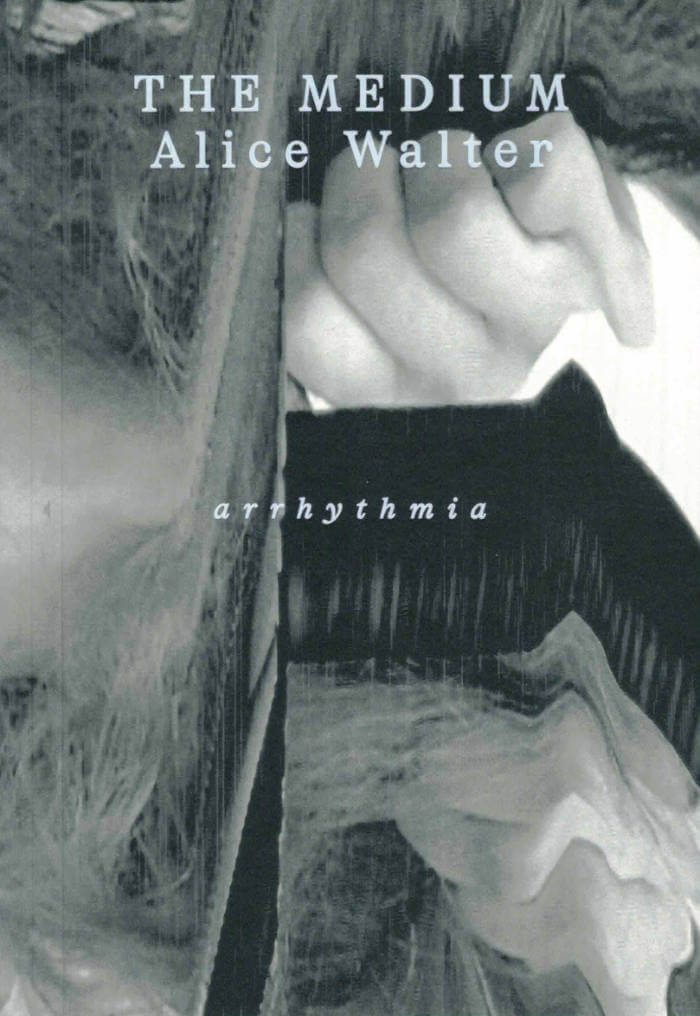
The Medium
To read The Medium is to be submerged in a stream of consciousness populated by uninvited voices from the underworld. Animated, urgent, and brutally propulsive, this cacophony of competing narratives begins to upset the boundary between the living and the dead. The Medium is an alchemical novel, shimmering with insight from the depths of a black lake.
The Medium is published as part of Arrhythmia, a series curated for Book Works by Katrina Palmer.
Alice Walter is an artist, writer and medium – living and working in the UK. She has a BA in Fine Art, Film and Video from Central Saint Martins, UAL and a MFA from The Ruskin School of Art, Oxford University. Her practice combines collage, psychosexual sculpture, VHS and shamanism. Through these disciplines, Alice creates surreal and sensory spaces that open channels for the unseen.
Katrina Palmer is an artist and writer, living in London. She is the author of The Dark Object (2010), The Fabricators Tale (2014), End Matter (2015) and Black Slit (2023), all published by Book Works. She has exhibited extensively, including with an Artangel Open commission (2015), at Henry Moore Institute (2015-16), Yorkshire Sculpture Park (2018), and with Estuary and Waterfronts (2021). She received the Paul Hamlyn Foundation Award for Artists (2014).

Saborami: Expanded facsimile edition
Cecilia Vicuña created Saborami in the aftermath of the September 1973 military coup in Chile. Combining poetry, journal entries, documentation of artworks including assemblages and paintings, the book was published in Devon, England in an edition of 250 hand-made copies by the artist-led Beau Geste Press. It was one of the first artistic responses to the violence of the fascist junta.
In recent years, Vicuña has gained increasing renown, including a retrospective at Kunstinstituut Melly (FKA Witte de With, 2019) and installations at the Guggenheim (2022); and Tate Modern (2023). Saborami is one of her most important works, made at a turning point in her life and career, and reverberating through to the present day. Though the book is highly regarded, it has also been hard to access. This new, expanded facsimile edition remedies this oversight, and restates Saborami as a central example of artistic engagement in material and revolutionary resistance.
Engaging obliquely with the legacies of surrealism, contemporaneous experiments in concrete poetry and the British conceptual art practices of the 1960s and 1970s, Saborami is part of an exilic and internationalist tradition. Years ahead of her time, Vicuña outlines an eco-socialist and feminist vision in the face of defeat.
Coinciding with the fiftieth anniversary of the book’s original publication and of the coup in Chile, this expanded edition contains a new introduction by art historian and curator Amy Tobin and poet and writer Luke Roberts. It includes rarely seen archival material from Vicuña’s time in London, such as contributions to the feminist newspaper Spare Rib, commentary from BBC coverage, and her role in Artists for Democracy in Chile and other solidarity campaigns.
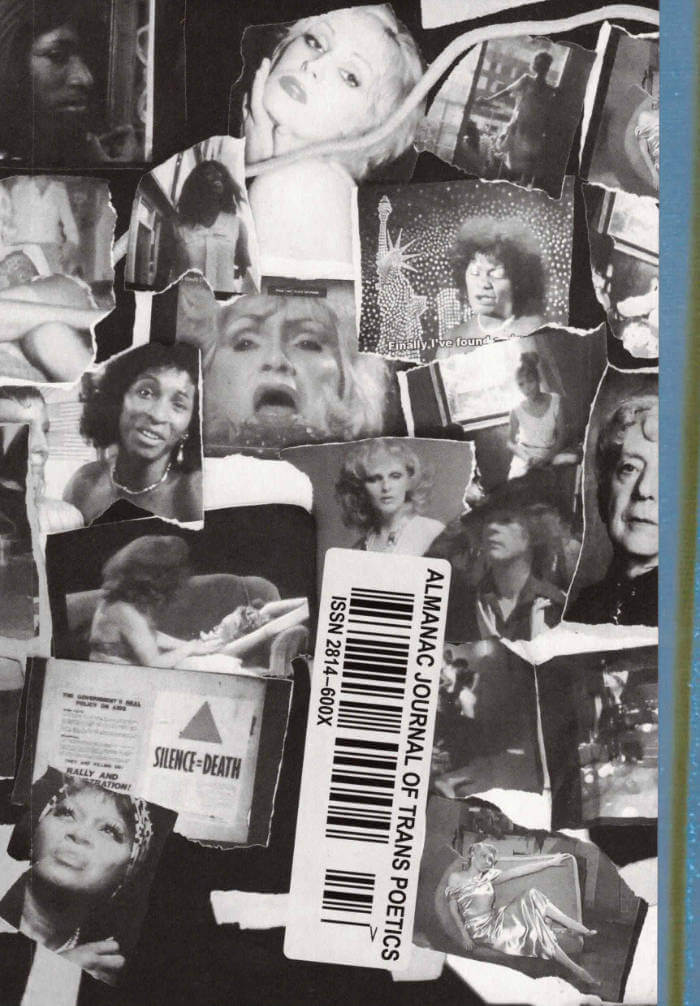
Almanac Journal of Trans Poetics: ISSUE #3 Cinema
In this issue, you’ll find different angles and takes on trans cinema. Featuring 22 contributors — the issue got pieces on gothic cinema, growing up as a TV kid in the 90s, trans femme film favs, cripness in Cronenberg’s work, love letters to the intimacy of the cinema hall and much more!
Sit back and get comfortable and let this third release take you on a journey through interviews, essays, comics, YouTube playlists, top favourite movie lists and beautiful, powerful film stills. This one is not to be missed!

A Book Knot Book
A Book Knot Book is a 208 pages long performance, the first from the research and publishing initiative Body Text. In this study of language in action systems of meaning-making crash, sparkle and swoon. In a playful voice over A Book Knot Book self-reflects on the materialities and choreographies of publishing, reading and writing. With guest stars in fragments; Monique Wittig, Yvonne Rainer, Cristina Rivera Garza, Amiri Baraka, Will Rawls, David Abram, Thich Nhat Hanh and more.
Edited and designed by Sara Kaaman. Published with the support of Stockholm University of the Arts.

Confidences / Oracle
Oracles don’t require belief—they now theatrically suspend disbelief. No longer advisors of world policy, they run Locus Solus, a town that has come to ramble around an eponymous theatre and chocolate factories. Theo, a centuries-old vampire intent on remaining contemporary through performance, visits Locus Solus, which is hosting Praise Estate, an international theatre festival. He uses the festival as an opportunity to stay with Gean, his oracle boyfriend, who is there visiting family. Theo has a fetish for the future, fixated on the one thing he is in no shortage of.
Confidences / Oracle is a lover’s trip to a weeklong theatre festival. A vehicle for recontextualising recent performance scripts and texts, Oracle is the third instalment in Ivan Cheng’s Confidences series, which intertwines vampires and performance as sites for circulation and recognition.
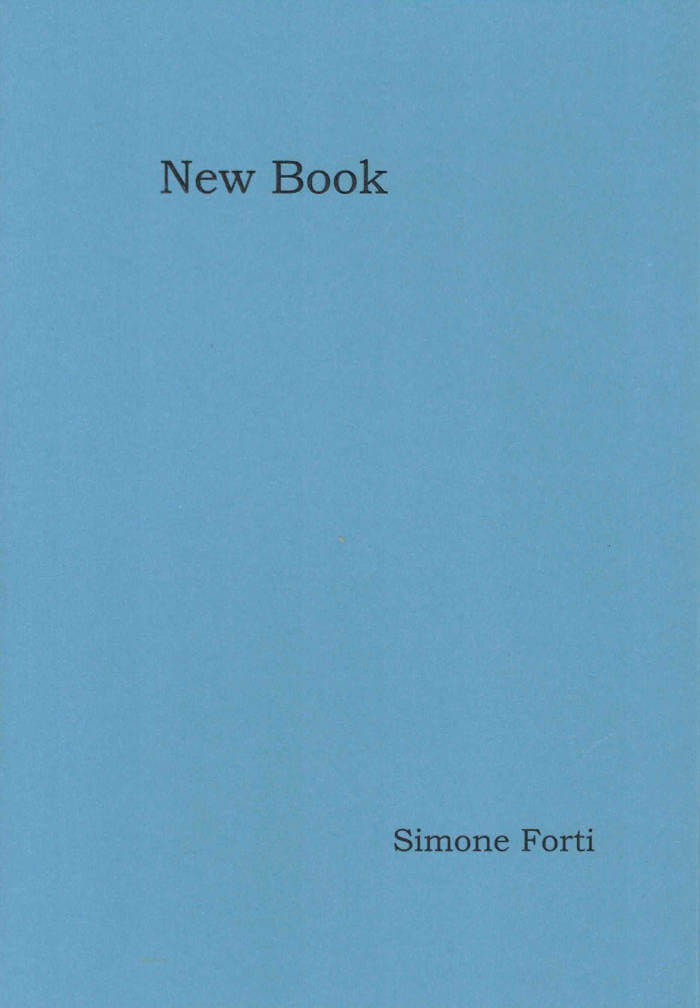
New Book
A new poem composed by the legendary dancer, artist and choreographer Simone Forti.
New Book is the title of a new poem composed of three existing poems re-edited by Simone Forti. As reading this poem, one moves forward with wonder amid everyday memories, recollections of life, a sense of civic duty, glimpses of a precarious world, the beauty of nature, melancholy, a rage to live.
American dancer and choreographer Simone Forti (born 1935 in Florence, Italy) has been a leading figure in the development of contemporary performance over more than fifty years. Artist, choreographer, dancer, writer, Forti has dedicated herself to the research of a kinesthetic awareness, always engaging with experimentation and improvisation. Investigating the relationship between object and body, through animal studies, news animations and land portraits, she reconfigured the concept of performance and dance. Forti emigrated from Italy with her family via Switzerland to Los Angeles in 1938, where she subsequently studied for four years with choreographer Anna Halprin and has since spent most of her life. She joined the experimental downtown art scene in New York during the emergence of performance art, process-based work and Minimal Art and spent a fruitful time in Rome in the late 1960s, where she used the spaces of L'Attico to study and perform. Her work is seen as a precursor of the famous Judson Dance Theater—a group of artists experimenting with dance, including Trisha Brown, Steve Paxton, and Yvonne Rainer—and Minimal Art, although she prefers to be referred simply as a "movement artist."

What Can Theatre Do
Miguel A. Melgares, Silvia Bottiroli
What Can Theatre Do invites artists and thinkers to explore the potential of the performing arts, the political role of theatre and its ability to imagine alternative realities and future scenarios, ranging from essays to artistic interventions.
At a time when the relation between art and society is under permanent scrutiny, the utterance What can theatre do serves as an open invitation for artists and thinkers alike to reimagine the potential agency of the performing arts. The formulation of this sentence is both ambitious and ambiguous since the affirmative or interrogatory status remains undefined. The intonation of the sentence can provide both a sense of hope and belonging or a nihilist sensation of powerlessness. It could provide a resource for research development and analytic inquiries, but could also serve as a suggestion to trigger political action.
From fictional interviews to recipes, social-media exchanges to dramaturgical texts, theoretical essays to artistic interventions, the contributions gathered here are a diverse and multifaceted collection of dialogues. These interventions are singular and unique but share concerns and desires about the politicality of theatre as a realm where possible alternative realities can be enacted and potential future scenarios can be collectively rehearsed.
What Can Theatre Do tries to explore the idea of a book as a complex performative apparatus that can generate a space within which art and theory, and therefore also strategies of reality-making and of fiction-making, can entangle and affect one another, creating possibilities for the emergence of the not yet imagined.
Contributions by Lotte van den Berg, Carolina Bianchi, Silvia Bottiroli, Ilenia Caleo, Laura Cull Ó Maoilearca, Piersandra Di Matteo, Valeria Graziano, Ainhoa Hernández Escudero, Samara Hersch, Asa Horvitz, Mala Kline, Low Kee Hong, Tom Oliver Jacobson, Miguel A. Melgares, Juan Miranda, Ogutu Muraya, Mazlum Nergiz, Andrej Nosov, nyamnyam (Ariadna Rodríguez and Iñaki Alvarez), Giulia Palladini, Venuri Perera, Livia Andrea Piazza, Amanda Piña, Annalisa Sacchi, Mariana Senne, Agat Sharma, Lara Staal, Elioa Steffen, Rolando Vázquez, Elioa Steffen, Suvani Suri, Pankaj Tiwari, Ingrid Vranken.
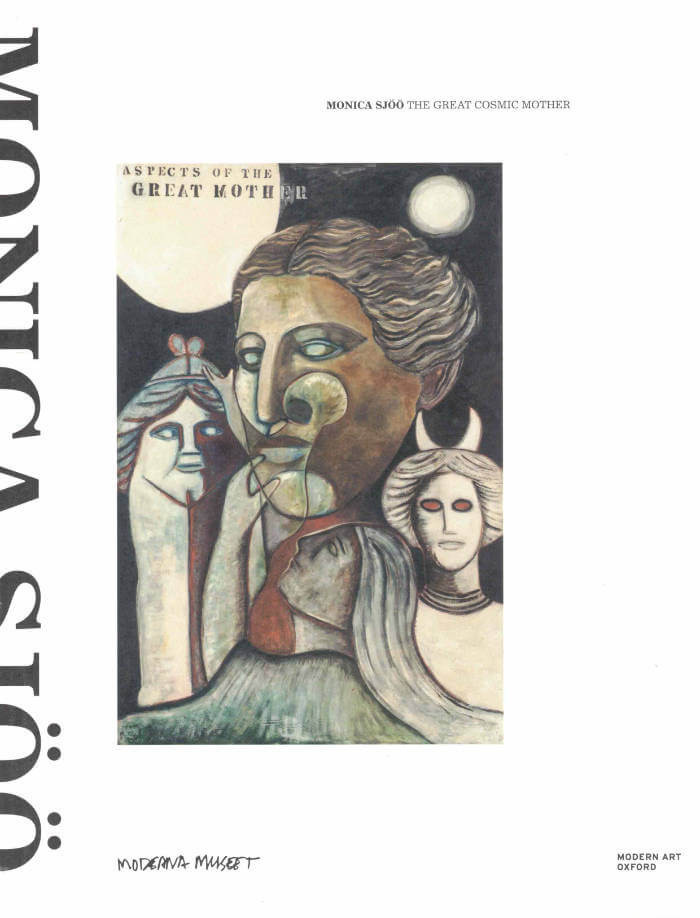
The Great Cosmic Mother
As a pioneer of feminist art and female spirituality, Sjöö began producing images that sought to express her growing resentment for social injustices.
Later works speaks to ancient knowledge and belief systems, drawing imagery from pagan sites and female symbols of the past, reflecting her lifelong research into ancient matriarchal cultures.
The catalogue traces the artist’s deep commitment to gender and environmental justice.
Contributions by Amy Budd, Jennie Klein, Olivia Plender, Jill Smith, Lucy Stein, Monica Sjöö, Amy Tobin, Jo Widoff, Annika Öhrner
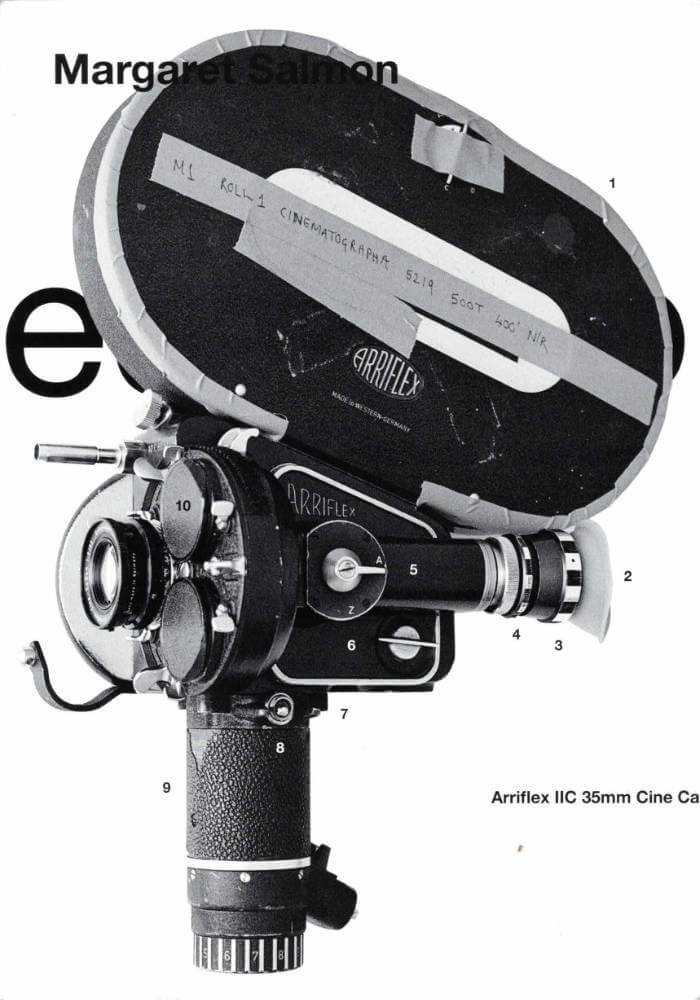
Cinematographa
Conceived by artist and filmmaker Margaret Salmon, this publication is a tribute to a group of innovative sister cinematographas and to the analogue motion picture camera. The book pairs an enquiry into women’s filmmaking practice with a comprehensive survey of experimental analogue technique across generations.
Nine filmmakers – Peggy Ahwesh, Betzy Bromberg, Rose Lowder, Babette Mangolte, Rhea Storr, Deborah Stratman, Alia Syed, Malena Szlam and Salmon herself, speak about the ways they use and think about their cameras, sharing technical knowledge and reflections on camera work to reveal their creative philosophies and intentions.
Included with the book is a separate manual: “An Artists' Guide to Analogue Cinematography”. This learning pamphlet was written and photographed by Salmon, and includes step by step instructions to the loading and basic use of three cine cameras.
Texts: Peggy Ahwesh, Betzy Bromberg, Rose Lowder, Babette Mangolte, Margaret Salmon, Rhea Storr, Deborah Stratman, Alia Syed, Malena Szlam
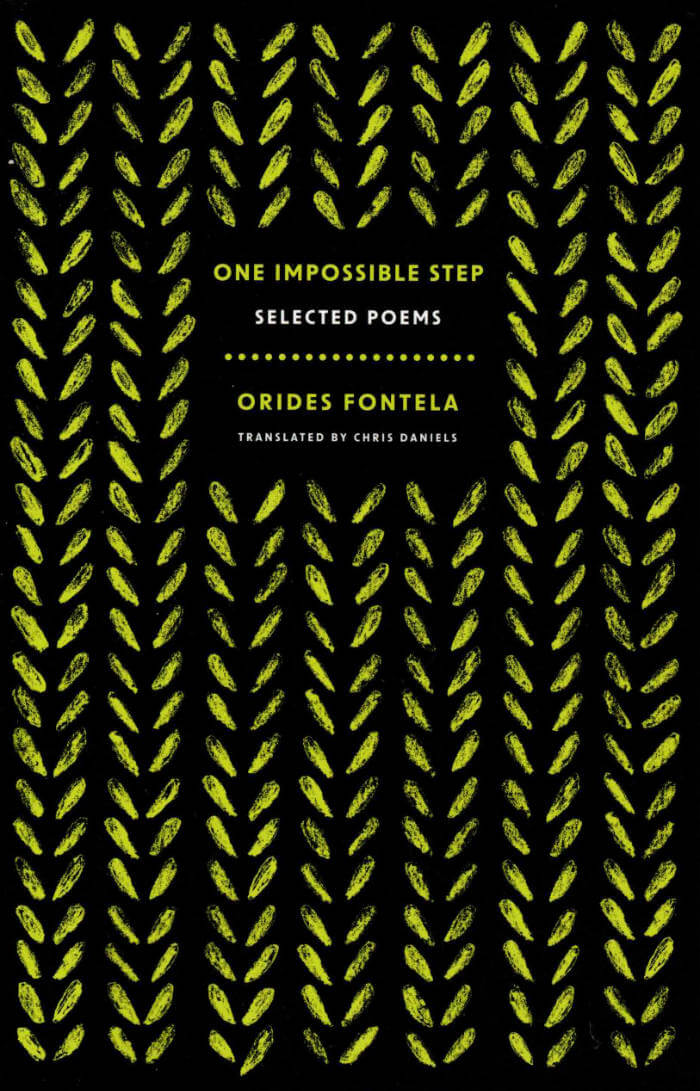
One Impossible Step
A selection of extraordinarily condensed, emotionally complex, philosophical poems by a unique and highly regarded 20th-century Brazilian poet.
In her lifetime, Orides Fontela resisted all labels, all attempts to situate her work in a particular movement, school, tendency, or tradition. Here, in her first ever English-language collection, Fontela’s poetry continues to defy easy categorization. In these concise, meditative poems, Fontela’s bird and flower, water and stone, blood and star can be read as symbols, indicating a possible tendency toward mysticism. Including an illuminating statement of poetics and excerpts from her often acerbic interviews, One Impossible Step introduces English-language audiences to an iconoclast who remains one across languages and decades.

desespiegles
This publication is presented as an object-book-manifesto of a ‘desespiegles’ way of thinking. It “translates” the trains of thought that architect-artists Anne Philippe and Jolien Naeyaert exchanged via videoletters. The videoletters mainly occurred during the covid period. Questioning the scope of the addressed images, these exchanges revealed a play of symmetries. It shows a series of interrogations, linking the intimate with the collective. The move towards a publication was obvious after conversations with Loes, Phyllis, An and Teresa of nadine. The desire to activate reading in a performative way, mirrors the exchange of videoletters. It continues the process-based methodology that inventively gave birth to a publication through the physical manipulation of the work. The riso-technique proved particularly suitable for this project, as the hands, the gaze and the exchange all played a role during the object-making process.
Dannie.n is an art-zine, published by nadine, about the artistic research, themes, and topics of discussion of the artists involved in nadine. nadine invites an artist or collective to create each new edition.
Dannie.p is a limited-edition artist's book by desespiegles (57 copies). nadine is supported by Vlaamse Gemeenschap, VGC, Brussels Hoofdstedelijk Gewest.
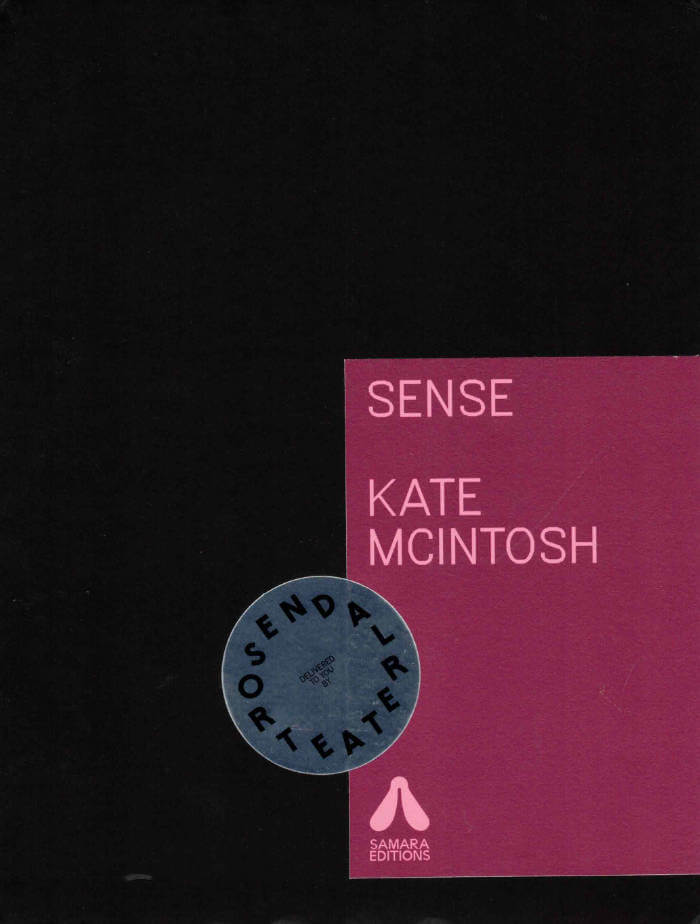
SENSE
Sense is a box of simple actions to try whenever you like. The Sense box contains three separate proposals - each one is unique and to be experienced independently from the others. The three parts are: a scent that confuses the wearer about their species, a ritual that turns the heart into a spray of lights, and a card game to start unexpected interactions among unknown hands. Sense is a subtle collection of sensory stimulants that are designed to open and rearrange perception of everyday events. Discover this box in your own time, and share with whoever you like. Take elements of it on your travels and try them with as many people as you can - the more friends and strangers do it, the more intriguing it can be.
Kate McIntosh creates work in a variety of different media, such as performance, theater, video and installation. Both humor and the link with science and experimentation are elements that frequently pop up in Kate’s work. Her practice is guided by her ongoing fascination with with misusing objects, and creating playful relations between spectators.

Protoplasmic Flow
One of artist Jenna Sutela's regular collaborators, Physarum polycephalum, is often referred to as a natural computer. This yellow, ‘many-headed’ slime mold is an ancient, decentralized, autonomous organism that processes data without a nervous system, operating via communities of coordinated nuclei that demonstrate advanced spatial intelligence. If the slime mold cannot find the resources it needs, it hibernates until better conditions arise; theoretically, it is immortal. Over the years, Sutela has, for example, ingested the slime mold in her performances as a form of artificial intelligence, letting its hive-like behavior program her own.
Sutela's work for Samara reactivates this line of work, delivering co-existence with the slime mold to people's homes in the form of a dried sample of Physarum polycephalum as well as related performative instructions. Inside the box, the audience receives everything necessary to grow slime mold at home, and witness the behaviour of this fascinating organism. With the set of performative instructions, Jenna Sutela proposes the ways of co-existing and engaging with Physarum polycephalum.
Jenna Sutela works with words, sounds, and other living media, such as Bacillus subtilis nattō bacteria and the “many-headed” slime mold Physarum polycephalum. Her audiovisual pieces, sculptures, and performances seek to identify and react to precarious social and material moments, often in relation to technology. Sutela's work has been presented at museums and art contexts internationally, including Guggenheim Bilbao, Moderna Museet, and Serpentine Galleries. She is a Visiting Artist at The MIT Center for Art, Science & Technology (CAST) in 2019-21.
Protoplasmic Flow contains everything required to activate the slime mold in a location of your choosing.
Duration: take all the time that you need
Language: Instructions are in English and Italian.

sur la route
sabiche, les lutins dîle de france and 1 more
Sur la route, de sabiche est la version housewife-poétesse kicked out de la maison où elle vivait, qui se retrouve on the road yeah, le long des pissenlits traînant d'énormes valises, pleines de livres et de bidules inutiles-essentiels, dont un crâne humain avec qui elle parle. Des lutins et Dodie Bellamy - dont sabiche traduit l'essai "L'écriture comme accumulation compulsive" - viennent l'aider...

écrissa bolossa
Frustration, inflammation, licences commerciales, torture et choux qui accouchent. Ça commence mal à Montreuil. Et ça finit dans le Kentucky. Là où tout a vraiment commencé.


Secession / Charlie Prodger
Charlie Prodger works across moving image, writing, sculpture, drawing and printmaking. Through the prism of queer subjectivity, her work explores intertwined relations between the body, landscape, language, technology and time. To accompany her exhibition and the presentation of the complete film trilogy—Stoneymollan Trail, BRIDGIT, and SaF05—a book with a substantial essay by Sarah Hayden is released in Secession’s publication series.
The London-based author and associate professor of literature and visual culture analyzes the significance of voice and voiceover in Prodger’s video works. For the book, the artist has created a series of image pairings of production photos and video stills from the final part of the trilogy, SaF05.

Experimental Translation
The history and future of an alternative, oppositional translation practice.
The threat of machine translation has given way to an alternative, experimental practice of translation that reflects upon and hijacks traditional paradigms. In much the same way that photography initiated a break in artistic practices with the threat of an absolute fidelity to the real, machine translation has paradoxically liberated human translators to err, to diverge, to tamper with the original, blurring creation and imitation with cyborg collage and appropriation.
Seven chapters reimagine seven classic “procedures” of translation theory and pedagogy: borrowing, calque, literal translation, transposition, modulation, equivalence, and adaptation, updating them for the material political and poetic concerns of the contemporary era. Each chapter combines reflections from translation studies and experimental literature with practical guides, sets of experimental translation “procedures” to try at home or abroad, in the classroom, the laboratory, the garden, the dance hall, the city, the kitchen, the library, the shopping center, the supermarket, the train, the bus, the airplane, the post office, on the radio, on your phone, on your computer, and on the internet.

The Ginny Suite
A mysterious global syndrome is affecting women, causing symptoms of submissiveness and aphasia. While the number of sufferers grows, so does our protagonist’s paranoia—of the media, her doctors, and her husband. In the age of misinformation, AI, and surveillance technology, The Ginny Suite asks how much—and who—we’re willing to sacrifice in the name of progress.
The Ginny Suite is formally innovative, a great read. Stacy Skolnik recasts the subject of the internet into telling particulars in her affecting choreography of memes/screens/women/men. — Constance DeJong, author of Modern Love
The Ginny Suite is a perfect hell of a book: a gossipy stylish mystery that’s both petty and profound. I love how its paranoias and insecurities tip lushly into plot: is the lyric condition of poetry a pathology? Is dissociation a radical response to the lived conditions of patriarchy, or is it patriarchy hacking your brain into submission? What if, instead of self-diagnosing through google, your search history was used to diagnose you, and form the basis of covert treatment? Anyone who’s ever suffered the malady of writing poems will recognise The Ginny Suite’s inability to stop picking these scabs. Its prose moves seamlessly from the lush to the blunt, awash with glitching pronouns, horny ennui, sci-fi intrigue and tender girlish digital fantasies—like if the author of Malina had a dormant Neopets account. I adored it. — Daisy Lafarge, author of Lovebug
Perversely brilliant, fearlessly inventive, The Ginny Suite beautifully illustrates the horror of being a thinking person inside of a body and culture rushing toward the graveyard. — Brad Phillips, author of Essays and Fictions
The Ginny Suite proves that Stacy Skolnik is one of the most timely and original voices in post-pandemic New York. — Joshua Citarella, author of Politigram and the Post-left
A Handmaid’s Tale for the Post-Truth-AI-Surveillance Era. — Suzanne Treister, author of Hexen 2.0
Stacy Skolnik is the author of the poetry collection mrsblueeyes123.com (self-released, 2019), the chapbook Sparrows (Belladonna* Collaborative, 2023), the workbook From the Punitive to the Ludic: Prompts for Writing Public Apologies (with Thomas Laprade for Montez Press Radio, KAJE, 2022), and the chapbook Rat Park (with Katie Della-Valle, Montez Press, 2018). She is a co-founder and co-director of Montez Press Radio, the Lower East Side-based broadcast and performance platform. The Ginny Suite is her debut novel.

Basta Now. Women, Trans & Non-binary in Experimental Music
Basta Now. Women, Trans & Non-binary in Experimental Music is a non-academic essay by French poet, novelist and music enthusiast Fanny Chiarello. It’s also the first book to be published by Permanent Draft, an all-female record label and micro-press founded by Chiarello & musician Valentina Magaletti, dedicated to promoting contemporary female, non-binary and transgender artists.
Basta Now is essentially a huge (yet admittedly not definitive) overview of 2,371 womxn in the global experimental sound & music scene. It’s been writ ten in playful and compelling prose and stylishly presented with photos, illustrations, and discographies.
“This book has nothing against men, it’s just not about them” (Fanny Chiarello)
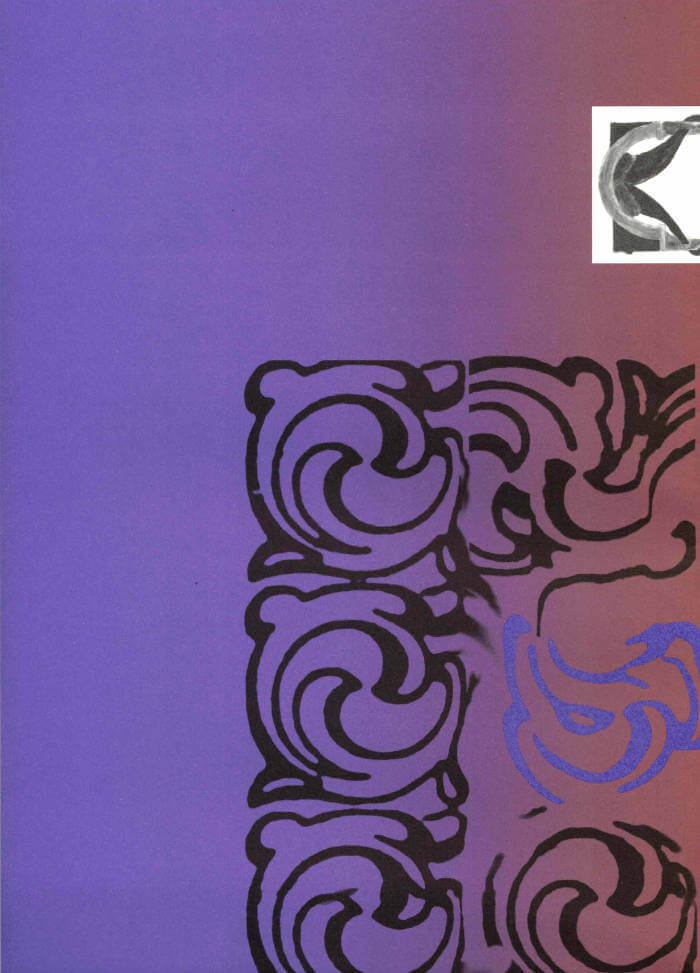
The Palace of Typographic Masonry
Ornamental Portal
The Palace of Typographic Masonry is an (imaginary) institute for the splendour and variety of visual languages. The Ornamental Portal informs the ornamental attitude of Rietlanden Women’s Office, the collective that designed this folding sheet for Von Wersin’s Kitchen. On the backside ‘The Redemptive Qualities Of Ornament’, a text by Dirk Vis, is printed. This iris printed sheet is send in a specific envelope depicting and describing the updated collection of Von Wersin's Kitchen.

National Letters: Languages and Scripts as Nation-building Tools
National Letters is the first book published by Letter Books. National Letters travels through the episodes of the past in which letters, languages, and scripts played an important role in creating nation-states and national identities. Through four case studies (Turkey, Israel, Georgia, Ethiopia), the main body of the book explores four languages and nations which were each, against all odds and for various reasons, able to develop and maintain their writing system throughout their entire history, up to the founding of their nation-state.
Edited and Designed by Marek Nedelka
Contributions and texts by Rusudan Amirejibi–Mullen, Ivo T. Budil, Birol Caymaz, Tomáš Garrigue Masaryk, Marek Nedelka, William Safran, Emmanuel Szurek
Postcard letterings by Jan Horčík, Seb McLauchlan, Anežka Minaříková, Jan Novák
Translations by Ian Mikyska and Sam Mackay
Copy-editing and proofreading by Aren Ock
Co-published with UMPRUM (Academy of Arts, Architecture & Design in Prague)

Mysterious Letters: Language, Science, and the Voynich Manuscript
Anežka Minaříková, Marek Nedelka
Mysterious Letters is a private investigation into the unsolved mysteries surrounding the Voynich Manuscript. The manuscript is considered to be a “UFO of a book world” as it was written in an unknown language and script, in an unknown location in the 15th century. The book features interviews and essays from various experts in different fields, all pondering the question of what it means to encounter something that remains beyond our comprehension in a world where all information and knowledge seem to be readily available.
Edited and Designed by Anežka Minaříková & Marek Nedelka
Essays by Anežka Minaříková, Arnošt Vašíček
Interviews and Conversations with Ivan Zelinka, Vladimír Matlach, Barbora Anna Janečková, and Reed Johnson
Copy-editing and proofreading by Aren Ock

New Address II. Stereotypical Artist
What is an artists’ life made of? From the home to the studio, from the studio to the gallery, from one exhibition to the next, from one place to another – a suite of moves and a list of addresses. Tobias Kaspar’s work sheds light on the ambivalent position of the artist, taken in a web of social and economic relations: in the second volume of New Address, he uses the tone of the diary, combined with the code of the moodboard, to document the side aspects of the life of a “stereotypical artist.”
The book gathers black & white photographs taken between 2018 and 2024, during the installation or the opening of exhibitions; at performances, dinners, parties; in different homes and rooms Kaspar has been living in; and in the course of daily activities. Contrary to an exhibition catalogue, projects by the artist such as his line of jeans, or his series of bronze sculptures made from disposable packaging, are thus shown “in the middle of affairs.”
An additional booklet opens with a short essay by artist Mikael Brkic, reflecting on the “behind the scenes” logics, followed by a letter penned by writer Leif Randt, and a text in which curator Kari Rittenbach discusses Tobias Kaspar’s work in relation to the economics and aesthetics of display and fashion. It concludes with a list of artworks in the order as they appear in the main book.
Published with the support of Erna und Curt Burgauer Stiftung, Pro Helvetia, Kultur Stadt Zürich.